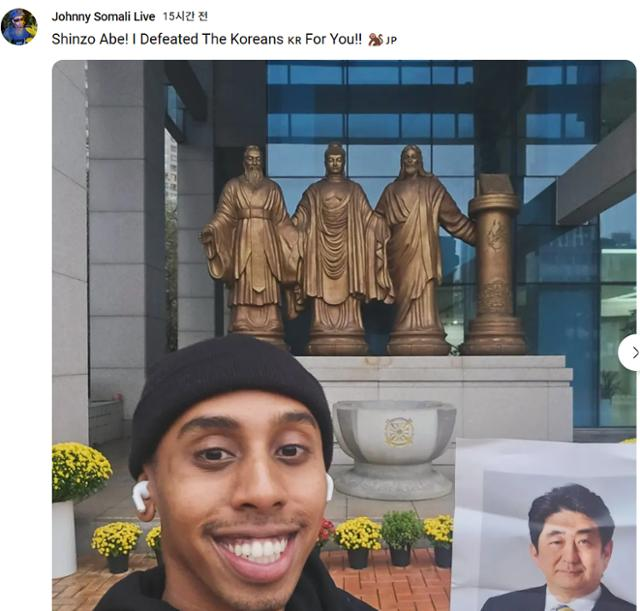An American YouTuber known for controversial stunts involving ‘comfort women’ statues has been attacked for the third time.
An American YouTuber, widely recognized for his controversial stunts involving the Statue of Peace, which commemorates the women and girls who were subjected to sexual slavery by the Japanese military during World War II, was assaulted for the third time since he arrived in Korea. This particular incident has drawn considerable attention due to the ongoing tensions surrounding his provocative actions and the historical significance of the statue itself.
The attacker, a man in his 20s with a military background as a member of the ROK Navy’s Underwater Demolition Team (UDT), was arrested promptly at the scene following the altercation. Reports indicate that he approached the YouTuber, identified as Johnny Somali, and posed a seemingly innocuous question: “Where are you going?” before suddenly striking him. Fortunately, Somali only suffered minor injuries from the attack, allowing him to continue his activities, albeit amidst growing controversy.
Johnny Somali, who is 24 years old and has garnered a following of approximately 20,000 subscribers on his YouTube channel, has sparked outrage in South Korea due to his series of provocative and often disrespectful stunts. Among his actions, he has been known to kiss the Statue of Peace, a symbol that holds deep emotional and historical resonance for many Koreans. His other antics, such as spilling instant noodles on tables in convenience stores, have further inflamed public sentiment against him. This string of provocative behavior has positioned Somali as a contentious figure in the country, attracting significant backlash from netizens and making him a target for various other YouTubers.
Prior to this latest incident, Somali faced two separate assaults in Mapo District on October 24 and October 27, highlighting a troubling pattern of confrontations linked to his presence in Korea. His actions have ignited discussions about cultural sensitivity and respect for historical symbols, particularly in a nation still grappling with the legacy of wartime atrocities.
In addition to the assailant’s military background, it has been noted that he is also a YouTuber with around 8,000 subscribers. He has produced content in which he identifies himself as a former UDT member and expresses a commitment to “catch Johnny Somali.” This suggests that the tensions surrounding Somali are not just personal grievances but also a part of a broader narrative within the YouTube community in Korea, where his provocative actions have led to collective outrage and calls for accountability.
On the day of the assault, police received multiple reports of a gathering of YouTubers in the area and responded swiftly, leading to the arrest of the assailant. This incident underscores the complex interplay between social media influence, historical memory, and public sentiment in South Korea, where figures like Somali can evoke passionate reactions due to their actions and the implications they carry.
As the story continues to unfold, it raises important questions about the responsibilities of content creators in navigating sensitive cultural and historical contexts, as well as the lengths to which individuals may go to express their dissent against perceived disrespect. The repercussions of Somali’s actions and the reactions they provoke highlight the powerful intersection of history, social media, and contemporary discourse, leaving many to ponder the broader implications for both creators and audiences in the digital age.




